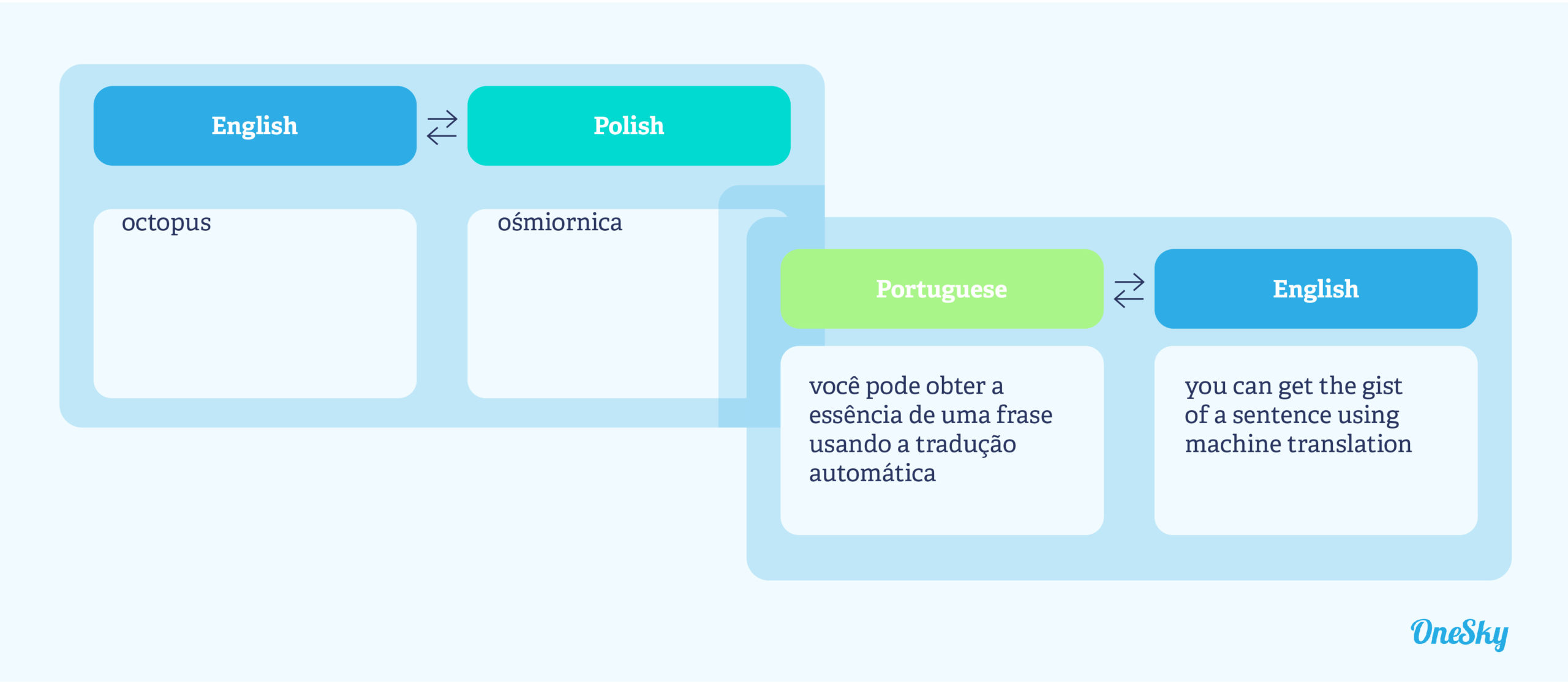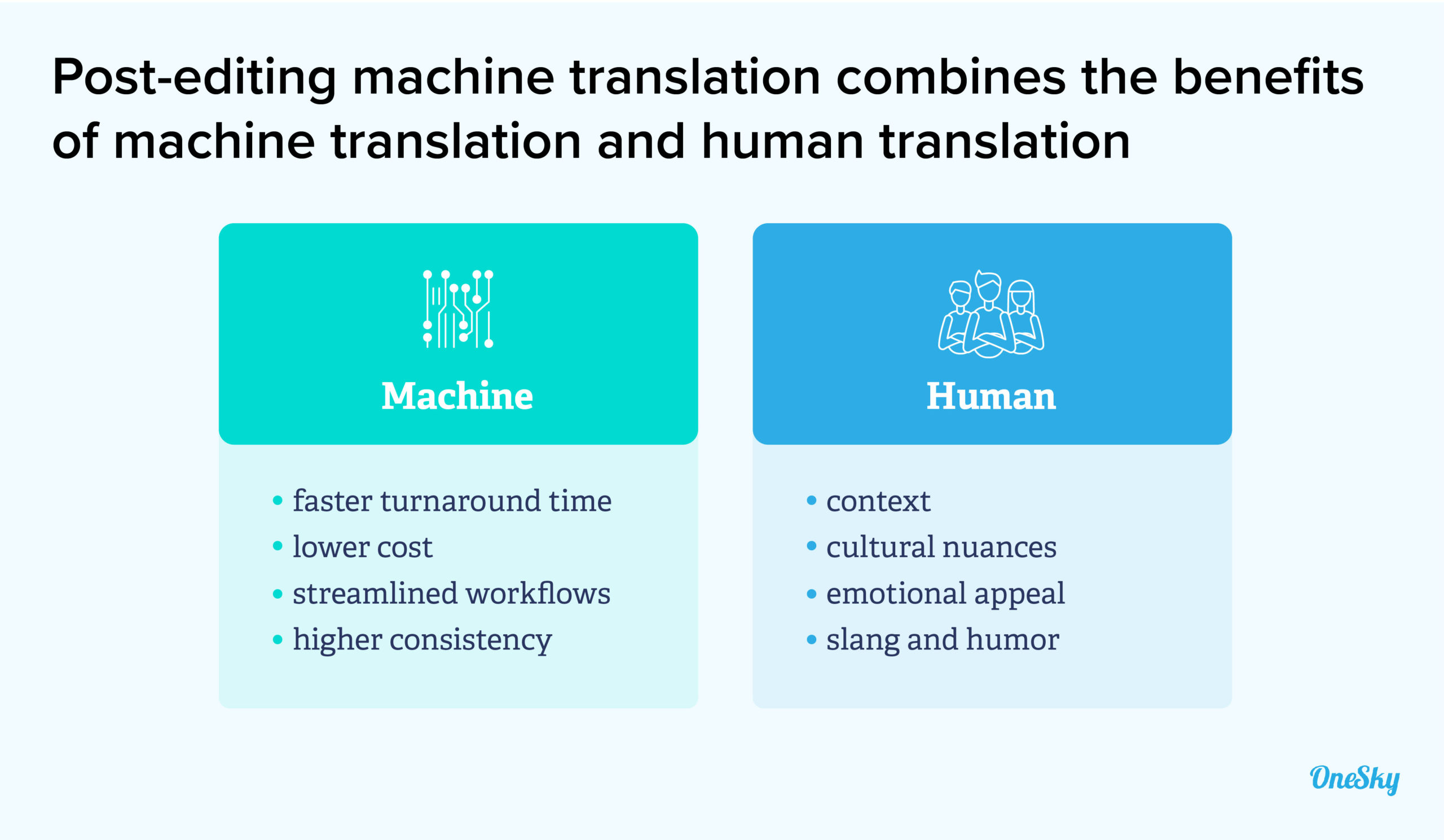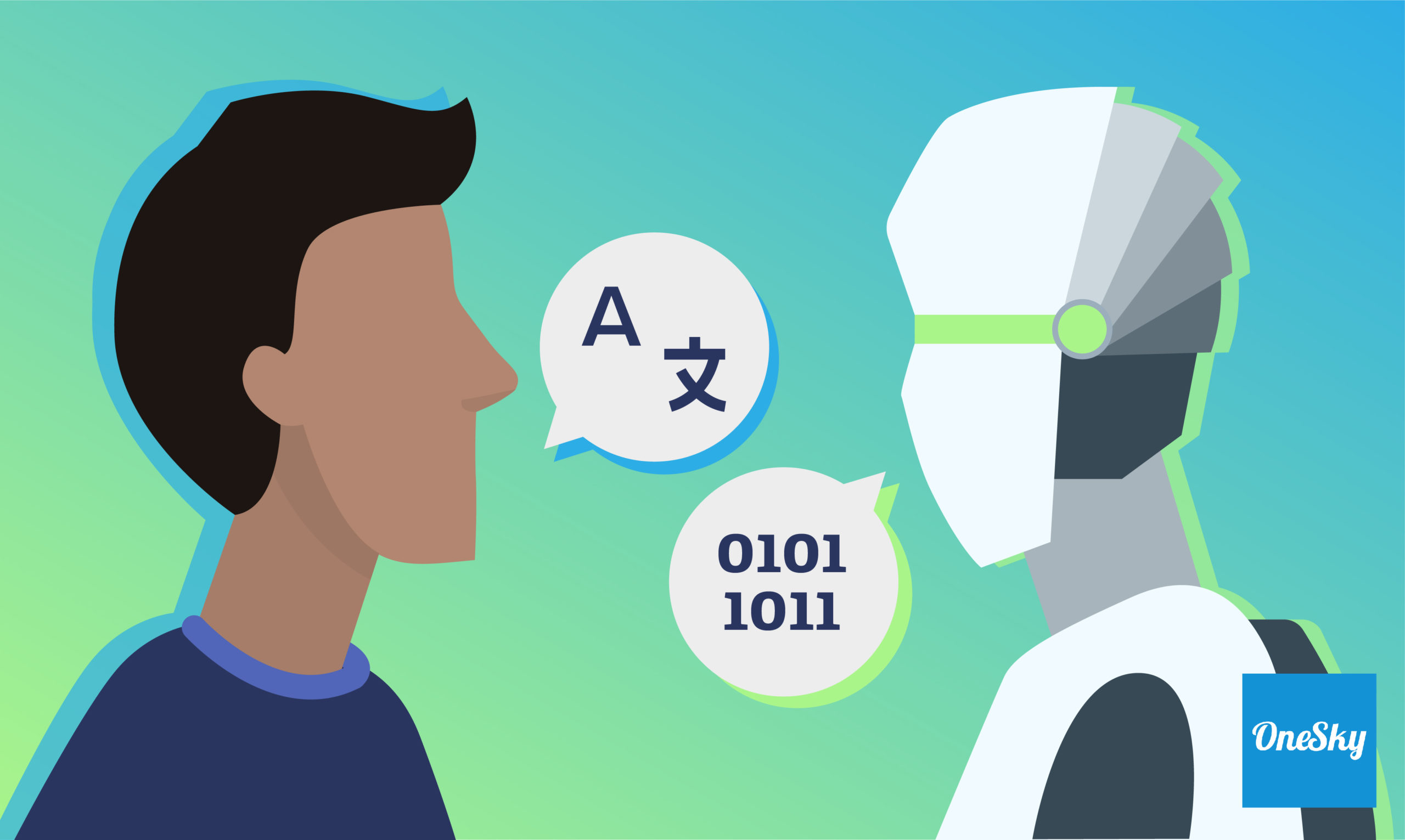Do you Need a Human Translator For Your App, Game, or Website?
Artificial intelligence (AI) and neural machine translation technologies are everywhere. You can fire up Google Translate and get different languages translated in no time.
Machine translation is fast and low cost. It can handle any language pair you throw at it. So do you still need human translation services to localize your game, app, website, software, etc.?
The answer is a definitive yes.
Most localization projects will benefit from having human translators and machine translation working in tandem to yield the highest quality outcome.
Machine translation software can increase the efficiency of the translation process and make sure the user interface (UI) is displayed as intended. Meanwhile, professional human translators ensure that the content is accurate and appropriate for the context and the audience.
Here’s how machine translation falls short, why you still need human translators, and how to use machine translation to augment human translation to get the best of both worlds.
The Downsides of Machine Translation
Machine translation works fine when you need to translate an individual word to a different language. For example, Google Translate can tell you what octopus is in Polish. Or, if you want to get the gist of a sentence in Portuguese, machine translation will do a fine job.

However, if you need quality content for business, legal, and marketing purposes, machine translation solutions alone can’t deliver the high-quality and accurate translation you need to meet your objectives.
Here are some pitfalls of relying on machine translation tools alone:
- The translated content may not be appropriate for the culture of the target locale, and it could even offend the audience.
- Machine-translation can’t take into account slang, idioms, phrasing, and local references to bring your content to life.
- Machine translated content is often mechanical and impersonal, which could end up hurting your brand image.
- Humor often falls flat on its face. At best, it’d come across as nonsensical and, at worst, inappropriate and offensive.
- Machine translation software still falls short in navigating language structure (e.g., how words are ordered in a sentence.)
- Machine translation can’t capture the creativity and overall vibe, which is particularly critical for successful video game localization.
- Poorly-translated content can diminish trust in your brand, which is particularly detrimental when you try to establish a foothold in a new market.
- Machine translation tools often have trouble with words that have multiple meanings.
- If you’re in a highly regulated industry, inaccurate machine translation could get you into legal trouble.

Why You Still Need Human Translators For Your Localization Project
Localization is more than word-for-word translations. The process must address the culture, context, and psychology of the audience.
Professional translation services staffed by human translators can help you avoid the pitfalls of machine translation and deliver high-quality content for your game, app, software, or website localization project.
Native speakers can help you adapt cultural nuances in the source content to the target language without losing the essence of the message. Meanwhile, subject matter experts can ensure that the correct terminologies and phrasing are used in the final content.
Human translators consider the context to make correct word choices. They can also catch typos and errors in the source content and adjust the translated text when necessary to get the point through.
Translators who understand the local market can help you transcreate content to connect with your audience and capture opportunities unique to the locale. For example, by drawing culturally-specific analogies or applying humor that’s appropriate for the context.

Professional translators take the time to understand your product and business objectives to create content that aligns with your brand image and goals. They also incorporate local keywords for search engine optimization (SEO) to help increase your reach in the market.
Using the same translation team over time can help maintain a consistent tone and voice across channels (e.g., website, social media, app, etc.) Not to mention, accurate human translation helps prevent expensive and time-consuming reworks to save you money in the long run.
But Don’t Dismiss Machine Translation Yet! How To Use Machine Translation to Augment Human Translation
It’s not an “either-or” but a “both-and” when it comes to machine translation vs. human translation. In fact, most translation agencies use both methods to support effective and efficient localization.
Here’s how machine translation tools can help human translators create high-quality and accurate translation cost-effectively:
- Machine translation software can speed up many translation tasks and shorten the turnaround time.
- You can use machine translation to pre-translate source text and see how the final content may appear in the UI to inform design decisions and minimize rework.
- Machine translation can facilitate the localization of less common language pairs (e.g., from Arabic to Czech) to ease resource limitations.
- Features such as translation memory and translation glossary can help translators improve efficiency and consistency over time.
- Machine translation can quickly refresh content that only needs a few words updated.
- Short-form content that requires a fast turnaround, such as social media posts, can benefit from the speed of machine translation.
- Translation tools can facilitate quality assurance(QA) and testing processes to ensure that the final content works well in the game or app UI.
Many translation companies pair human translators with machine translation to get the best of both worlds — fast turnaround time, lower cost, the ability to process a large volume, along with cultural sensitivity and accurate translation.
More language services providers (LSPs) are combining advanced technologies with professional translators in a process called post-editing machine translation (PEMT) to deliver the best translation for their clients.

Most computer-aided translation (CAT) tools offer post-editing features to help improve this human-machine collaboration. These include:
- Terminology management systems, such as term base and translation memory, to ensure consistency.
- Machine translation quality estimation (MTQE) tool to help project managers estimate the amount of post-editing work required.
- A QA tool to help identify errors from the original output or introduced during the post-editing process.
Post-editing requires specific skills. Your LSP should adhere to ISO 18587:2017 standards to ensure the highest quality translation.
Use a Robust Localization Platform That Brings Together Machine and Human Translation
To combine the benefits of machine translation with the advantages of human translation, you need a powerful localization platform with advanced technologies and an experienced project manager who can effectively coordinate professional translators.
OneSky is an all-in-one localization solution with the CAT tools and automation features you need, including translation memory, term base, string context, workflow automation, translation APIs, and more.
Additionally, you can have access to a dedicated translation manager and over 1,000 professional translators fluent in 50+ languages to help ensure that your translated content is accurate, resonates with your target audience, and supports your business objectives.
Try OneSky for free to get the best of both worlds.



 Written by -
Written by - 


 Written by
Written by 


